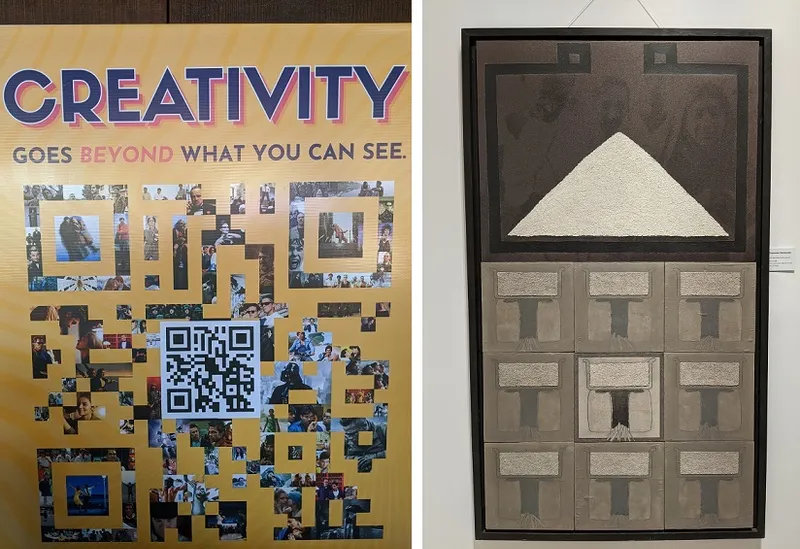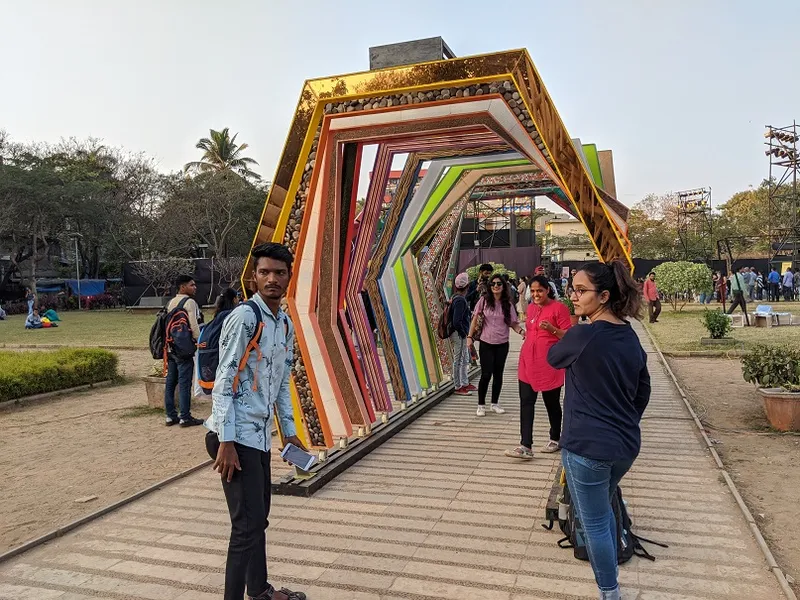Creativity for a cause: how these artists deliver social messages and impact
A range of activists are using arts to showcase the rights of children and youth, as shown at the Kala Ghoda Arts Festival.
Launched in 2014, PhotoSparks is a weekly feature from YourStory, with photographs that celebrate the spirit of creativity and innovation. In the earlier 445 posts, we featured an art festival, cartoon gallery. world music festival, telecom expo, millets fair, climate change expo, wildlife conference, startup festival, Diwali rangoli, and jazz festival.

The 21st edition of the annual Kala Ghoda Arts Festival wrapped up this month in Mumbai, with a showcase of art, architecture, and activism. See our eight-part coverage of the 2020 edition here, as well as our earlier articles on the festival editions of 2019, 2018 and 2017.
One of the exhibits was a twelve-foot high installation called ‘Ropes of Poverty,’ commissioned by the Magic Bus Foundation. It was conceptualised by Famous Innovations and created by Vinod Guruji. It displayed symbols of poverty that serve as a limitation for children from achieving their dreams in education, social life, and livelihood.
“The installation reflects the festival’s theme, ‘Thread.’ It is intended to reflect the poverty that surrounds us every day, but is yet unseen,” explains Sharmila Subramaniam, Communications Director of the Magic Bus Foundation, in a chat with YourStory.
The foundation, established in 1999, provides children and teenagers with skills and knowledge to break out of poverty. Since its inception, Magic Bus has impacted over a million youth, Sharmila explains.
Art conveys messages to viewers and can act as a channel for change by creating awareness about key issues. “For Magic Bus, the installation Ropes of Poverty involves society in our cause, and engages them in a conversation around the misfortunes faced by children and young people in poverty,” Sharmila says.
She calls for broader appreciation of art in India. “Art need not be looked at in isolation. It is in every sphere of life around us – graffiti, wall art, signages, sculptures, monuments, and public spaces,” she explains.
Unfortunately, art is seen as intimidating by some people, and viewed as something only for connoisseurs. “But all art forms can communicate citizens’ concerns, and should not be perceived as something divorced from life,” Sharmila emphasises.
“I think schools in India should reintroduce the concept of learning through the arts, and ensure that a discerning audience gets readied to appreciate art from early on,” she urges. She calls for audiences to open themselves up to art so that they can draw inspiration and reflection from it.
“Thanks to the wide cross-section of its audience, KGAF is an excellent forum to showcase art and bring alive the challenges that are faced by poor children and youth,” Sharmila enthuses.
The installation received wide acclaim, especially the interactive element of making people pull a rope to experience what disadvantaged children have to go through every day. More people need to appreciate that all children deserve education, sustainable employment, and the right to choose at what age to be married, Sharmila urges.
In addition to outdoor exhibits and performances, there were a number of indoor displays at the Jehangir Art Gallery, curated by Sonal Motla. She has broad experience as an artist, educationist, curator and gallerist for over 30 years.
“I have also been active in the social development sector, and founded the platform ‘Reform Mumbai’ for youth to collaborate and tackle civic issues,” Sonal explains. Its activities include data collection, art workshops, and leadership programmes.
After all, a country’s future and strength lie in its youth, she adds. She also helps art educational institutes fill in gaps with respect to topics like video art and outdoor installations.
“There is angst in my heart when I think about how our educational system and cultural avenues need to meet the needs of arts students,” she laments. For instance, lakhs of arts students graduate each year, but there are not enough galleries in Indian cities to showcase their work.
More festivals like KGAF are needed for the art movement in India, Sonal emphasises. At this year’s festival, she curated exhibitions in six galleries. “The focus was on art for impact and social change,” Sonal says.
Themes ranged from reinvention of urban spaces to the protection of children’s rights. There were also workshops, panels and debates on these issues. “Art evokes emotion and a call for action,” Sonal affirms.
For example, the ‘Lost Childhood’ exhibition on children’s rights included displays of the 1098 Child Helpline number for concerned citizens to report abuses. “Information, emotion and participation were woven together in the exhibition,” Sonal explains.
She regards KGAF as an effective platform with respect to art in the public and art for a cause. “Togetherness at events is good, but we also need something deeper and more meaningful to bring about progressive change,” Sonal signs off.
Now, what have you done today to pause in your busy schedule and harness your creative core for a higher cause?


























Got a creative photograph to share? Email us at PhotoSparks@YourStory.com!
See also the YourStory pocketbook ‘Proverbs and Quotes for Entrepreneurs: A World of Inspiration for Startups,’ accessible as apps for Apple and Android devices.







